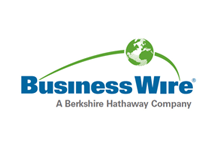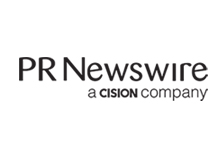Automotive NVH Materials - Global Market Trends, Share, Size, Growth and Forecast (2019-2024): An $11.3 Billion Opportunity - ResearchAndMarkets.com
The "Automotive NVH Materials Market: Global Industry Trends, Share, Size, Growth, Opportunity and Forecast 2019-2024" report has been added to ResearchAndMarkets.com's offering.
The global automotive NVH materials market was worth US$ 8.2 Billion in 2018. Looking forward, the market value is projected to reach US$ 11.3 Billion by 2024, exhibiting a CAGR of 5.4% during 2019-2024.
Over the past few years, the sales of automobiles in emerging regions like India and China have been rising steadily. The strict government regulations for reducing vehicle noise levels are increasing the demand for NVH materials in these regions.
Moreover, several manufacturers are developing lightweight vehicles with enhanced fuel efficiency which helps in improving the noise and vibration quality of the vehicles. They are also focusing on mergers and acquisitions (M&A) to enhance their portfolio for NVH solutions.
Some of the other factors that are currently driving the market growth are the influence of NVH and Vehicle Refinement Levels on buying decisions, advanced NVH products with innovative technologies, changing lifestyles and rising incomes in both developed and developing economies.
Market Summary
Based on products, the market has been segmented into polyurethane, mixed textiles fibers, fiber glass, polyester fiber, NBR, polypropylene, PVC, textile materials (synthetic) and textile materials (cotton). Currently, polyurethane is the most popular product type in the global automotive NVH materials market.
On the basis of vehicle types, the market has been segmented into passenger vehicles, LCV and HCV, wherein, passenger vehicles dominate the market, holding the largest share.
The market has also been segregated on the basis of applications into trunk module, floor module, wheel arches, cockpit module, roof module, engine casing and bonnet liners.
Region-wise, Asia Pacific exhibits a clear dominance in the global automotive NVH materials market. Other major regions include Europe, North America, Middle East and Africa, and Latin America.
The competitive landscape of the market has also been examined with some of the key players being BASF SE, The DOW Chemical Company, ExxonMobil, 3M Company, Mitsui Chemicals, Inc., Sumitomo Riko Company Limited, Covestro AG, Celanese Corporation, Huntsman Corporation, Lanxess AG and Borgers AG.
Key Questions Answered
- How has the global automotive NVH materials market performed so far and how will it perform in the coming years?
- What are the key regional markets in the global automotive NVH materials industry?
- What is the breakup of the global automotive NVH materials market on the basis of product type?
- What is the breakup of the global automotive NVH materials market on the basis of vehicle type?
- What is the breakup of the global automotive NVH materials market on the basis of application?
- What are the various stages in the value chain of the global automotive NVH materials market?
- What are the key driving factors and challenges in the global automotive NVH materials market?
- What is the structure of the global automotive NVH materials market and who are the key players?
- What is the degree of competition in the global automotive NVH materials market?
- How are automotive NVH materials manufactured?
Topics Covered
1 Preface
2 Scope and Methodology
2.1 Objectives of the Study
2.2 Stakeholders
2.3 Data Sources
2.4 Market Estimation
2.5 Forecasting Methodology
3 Executive Summary
4 Introduction
4.1 Overview
4.2 Key Industry Trends
5 Global Automotive NVH Materials Market
5.1 Market Overview
5.2 Market Performance
5.3 Market Breakup by Product
5.4 Market Breakup by Vehicle Type
5.5 Market Breakup by Application
5.6 Market Breakup by Region
5.7 Market Forecast
6 Market Breakup by Product
6.1 Polyurethane
6.2 Mixed Textiles Fibers
6.3 Fiber Glass
6.4 Polyester Fiber
6.5 NBR
6.6 Polypropylene
6.7 PVC
6.8 Textile Materials (Synthetic)
6.9 Textile Materials (Cotton)
7 Market Breakup by Vehicle Type
7.1 Passenger Vehicles
7.2 LCV
7.3 HCV
8 Market Breakup by Application
8.1 Trunk Module
8.2 Floor Module
8.3 Wheel Arches
8.4 Cockpit Module
8.5 Roof Module
8.6 Engine Casing
8.7 Bonnet Liners
9 Market Breakup by Region
9.1 Asia Pacific
9.2 Europe
9.3 North America
9.4 Middle East and Africa
9.5 Latin America
10 Global Automotive NVH Materials Industry: SWOT Analysis
10.1 Overview
10.2 Strengths
10.3 Weaknesses
10.4 Opportunities
10.5 Threats
11 Global Automotive NVH Materials Industry: Value Chain Analysis
11.1 Overview
11.2 Suppliers of Raw Materials
11.3 Manufacturers of Polymers
11.4 Automotive Component Manufacturers
11.5 Automobile OEMs
12 Global Automotive NVH Materials Industry: Porters Five Forces Analysis
12.1 Overview
12.2 Bargaining Power of Buyers
12.3 Bargaining Power of Suppliers
12.4 Degree of Competition
12.5 Threat of New Entrants
12.6 Threat of Substitutes
13 Global Automotive NVH Materials Industry: Price Analysis
13.1 Price Indicators
13.2 Price Structure
13.3 Margin Analysis
14 Automotive NVH Materials Manufacturing Process
14.1 Product Overview
14.2 Raw Material Requirements
14.3 Manufacturing Process
14.4 Key Success and Risk Factors
15 Competitive Landscape
15.1 Market Structure
15.2 Key Players
15.3 Profiles of Key Players
15.3.1 BASF SE
15.3.2 The DOW Chemical Company
15.3.3 ExxonMobil
15.3.4 3M Company
15.3.5 Mitsui Chemicals Inc.
15.3.6 Sumitomo Riko Company Limited
15.3.7 Covestro AG
15.3.8 Celanese Corporation
15.3.9 Huntsman Corporation
15.3.10 Lanxess AG
15.3.11 Borgers AG
For more information about this report visit https://www.researchandmarkets.com/research/92w3s4/automotive_nvh?w=4
View source version on businesswire.com: https://www.businesswire.com/news/home/20190228005416/en/




